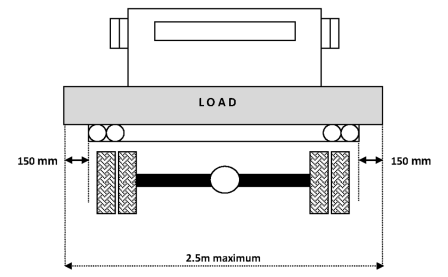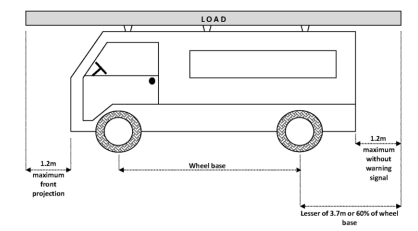On this page
Before transporting loads on a motor vehicle, you must ensure that all safety measures and loading regulations have been met. The following information covers the key requirements relating to carrying loads on motor vehicles. Detailed information is contained in the Road Traffic Act and Regulations.
Securing load safety requirements
The owner or driver of a vehicle is responsible for ensuring that any load on a vehicle is securely and safely restrained in accordance with the Load Restraint Guide for Light Vehicles and does not present a danger to people or property.
Read the 2018 Load Restraint Guide for Light Vehicles
When loading a vehicle ensure that:
- the load will not move or become dislodged from the vehicle
- the position of the load will not affect the vehicle’s stability, steering, and braking performance
- the tyres and axles of the vehicle are not overloaded.
During the journey, a driver should periodically stop the vehicle in a safe location and check the load and its restraints to ensure it remains secure and will not move with sudden braking or cornering.
Note: Penalties apply for not securing a load properly.
Mass of the load
The mass of any load being carried on a vehicle must not exceed the maximum load capacity specified by the vehicle manufacturer.
Total mass of the load and vehicle
The mass of a vehicle and its load must not exceed the gross vehicle mass (GVM) specified by the vehicle manufacturer or the GVM specified on the vehicle’s registration certificate, whichever is the lesser.
Note: For information about towing and trailer regulations see Light vehicle towing regulations.
Mass on the tyres and wheels
The mass on any of the tyres and wheels fitted to a vehicle must not exceed the limit specified by the manufacturer. The tyre rating can usually be found on the sidewall of the tyre. Wheels should not be used unless marked and stamped by the manufacturer.
Side projection
The maximum width of a load is 2.5 metres. In addition, a load must not project more than 150 mm from the outermost part of either side of a vehicle, regardless of the width of the vehicle (refer Figure 1). For example, if a light vehicle is 2 metres wide, then the width of the load it may carry will be a maximum of 2.3 metres.

Figure 1. Side projection limits
Front projection
The load being carried on any vehicle must not project more than 1.2 metres forward of the vehicle (refer Figure 2).

Figure 2. Front and rear projection limits
Rear overhang
The rear overhang of a vehicle is the distance measured from the centre of the rear axle or axle group, to the rear of the vehicle and includes any equipment. The rear load projection is the distance measured from the rear of the vehicle to the rearmost end of a load being carried and is included in the rear overhang measurement.
The maximum rear overhang allowed is 60% of the wheelbase up to a maximum of 3.7 metres, whichever is the lesser. The wheelbase is the distance between the centre of the rear axle or rear axle group to the centre of the front axle (refer Figure 2).
Note: The rear of a load on a vehicle must carry a warning signal if the load projects more than 1.2 metres or cannot be easily seen. In the daytime, the warning signal must be a brightly coloured flag measuring at least 300mm x 300mm. At night, the warning signal must be a red light that can be seen for 200 metres; a bicycle tail light may be used.
Safety checklist
- ropes and lashings are tight and not likely to lose tension with travel
- the load is safely secured to the vehicle and does not present any danger to other people or property if it projects past the body, even if it meets all the dimensions and safety requirements
- the load is correctly balanced and restrained so that there is no movement with braking or cornering
- the load being carried does not exceed the length and projection limits
- the total mass of the load and vehicle does not exceed the vehicle’s GVM.
Note: This page provides the main requirements for carrying loads on vehicles. For full details, you will need to refer to the South Australian Road Traffic (Light Vehicle Mass and Loading Requirements) Regulations.
Vehicle Standards reference: MR143.

